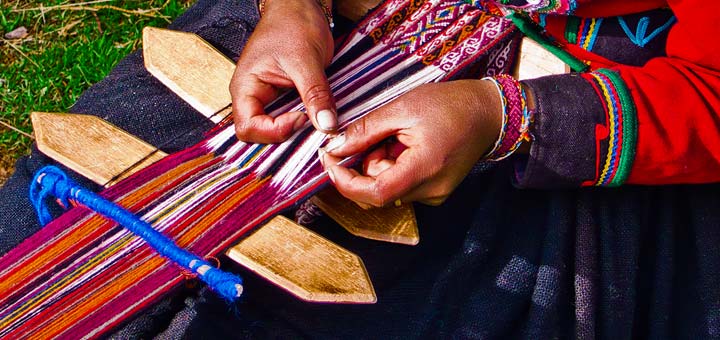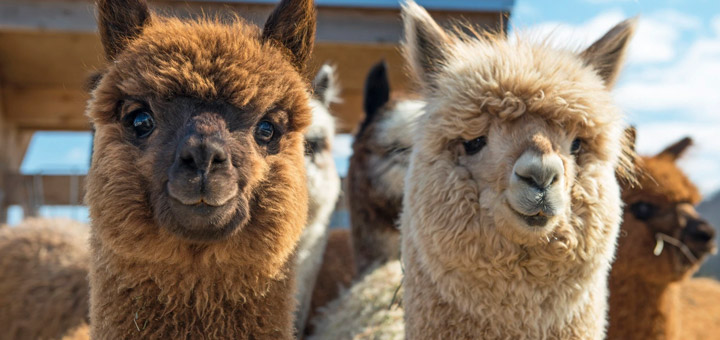Alpaca is often referred to as the fiber of the Gods. It holds and carries a lot of reputation in Peru and other South American countries. Alpaca wool history has been known as a colorful one, and its use dates back a long time ago. Alpacas were highly valued animals in pre-Inca and Inca times. Their fiber was limited to royalty and the important people.
Later, during, and after the Spanish Conquista, the alpacas were used as pack animals and it was then when their fiber deteriorated. To better understand the importance and popularity of alpaca wool today, it is necessary to go back in time and see how the people used the alpacas and their wool. Here are some very interesting alpaca facts and a short view of its rich history.
Alpacas go way back in history. They have been hunted and eaten by some of the hunter-gatherer civilizations in the Andean regions. That is where they became domesticated. 5500 years ago, the alpacas were domesticated in Telarmachay (region of Junin – Peru). According to the archaeological evidence, alpacas and llamas were found in graves, which show that the animals have been sacrificed as an offer.
Chiribaya people were an example of a civilization that ritually sacrificed alpacas and llamas. They included them on their tapestries and weavings. There were alpaca fetuses found underneath houses and important buildings, which showed a sacrifice to Mother Earth and a blessing to the building built on top of it.
Alpaca Fact: The Chiribaya people were not the only pre-Inca people who cherished the alpacas. In the Paracas region, fabrics dating 2000 years old are thought to be (partially) made with alpaca fiber.

During the time of the Incas, the alpaca fiber reached the most cherished and valuable position of its entire history. Inca’s empire was known to have many treasures, including lots of gold and silver. However, their most treasured assets were the textiles. Fabrics were one of the ways to show appreciation and status for the Incas.
They also had a great religious and social meaning. At that time, when one was given a piece of fabric, it was considered the most valuable gift that could ever be received. Fabrics that were made of alpaca were only available to the royalty and the highest government officials.
That is why only the most qualified weavers and artisans were allowed to work with alpaca. As an award, the successful soldiers were given a piece of cloth. When a battle was lost, they would burn down textile warehouses before retreating.
Alpaca Fact: The Incas did not use a currency. Instead, they gifted fabric to their most appreciated warriors and officials! Fabrics made with vicuña was the most valued!
During that time, the alpacas were domesticated together with the llamas and guanacos. Llamas were the domesticated descendants of the guanaco. The alpaca was the domesticated descendant of the more precious vicuña. This difference was more than obvious for the Incas because they used them for two different reasons: the alpacas for their fleece while the llamas as pack animals.
Alpaca Fact: Alpaca wool yarn in the past was much softer than it is nowadays!
You might also like: Real Alpaca Wool or Synthetic Material? Know What You’re Buying!
During the Spanish conquest time, the emperor failed to see the value of the alpaca and its fiber. The alpaca population almost disappeared back then. Alpacas were sent to work in the mines, and the rest died because of various diseases that the Spanish brought to South America.

Today about 90% of all the alpaca farmers are considered to be small farmers, who herd 10 to 150 individuals. What makes them unique are the old technologies used for production, which is similar to those used in Inca times.
They are the most efficient ones too. The current farmers have little available land due to the land reforms that did not allow them to expand. Only 3 percent of all the alpaca farmers are big producers with more than 600 alpacas per farm.
Investing in an alpaca piece that holds so much history is something not only fashionable but also carries heritage. A one-piece that will last for a long time is the alpaca blanket. We at Silkeborg have a wide selection and offer of the most unique and beautiful alpaca throws that are must-have pieces for your home.
In Silkeborg Uldspinderi we are here to help you. You will have at your disposal many high-quality products. If you want to buy any alpaca scarves, shawls, cushions, or throws, please don’t hesitate to contact us through our contact page.
